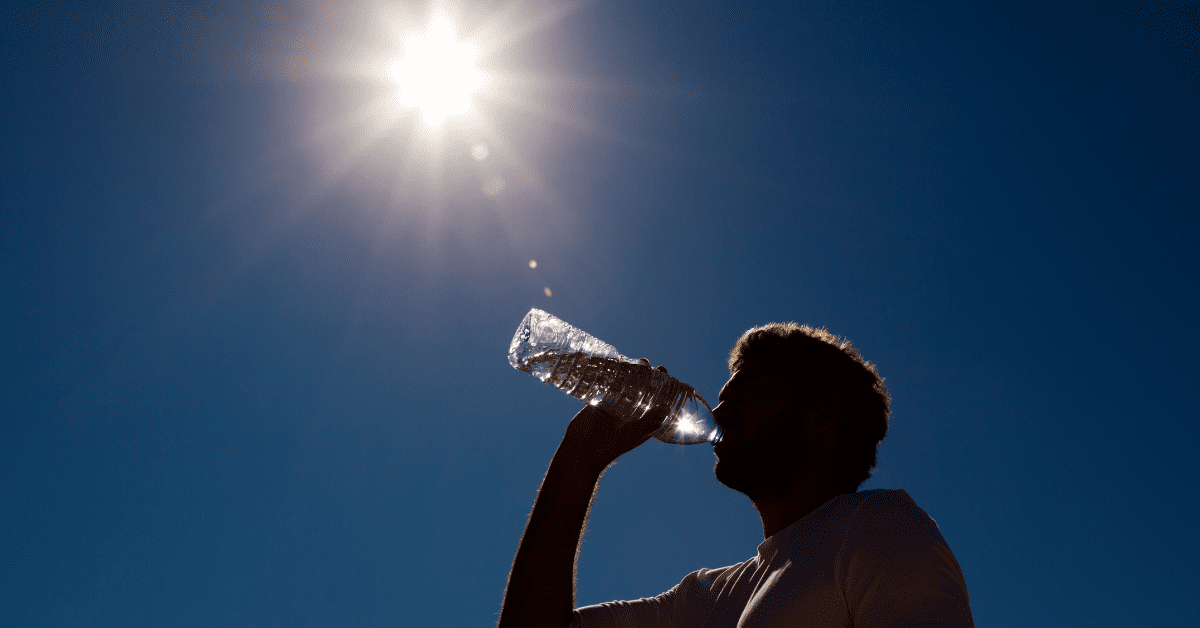
Working in the heat of summer can cause lawn and landscape workers to become sick from occupational heat exposure if proper preventative measures are not taken. There are a range of heat-related illnesses that can affect anyone regardless of their age, physical condition, or experience working in the heat.
Most outdoor fatalities, 50 to 70 percent, occur in the first few days of working in hot environments as the body needs to build up tolerance gradually over time. Heat-related illnesses can be prevented with an effective prevention program.
Preventative Methods
Creating a heat-illness prevention plan includes determining who will provide oversight on a daily basis, how will new workers be acclimatized to the heat, what engineering controls will be used to reduce heat stress, and how to determine if the total heat stress is hazardous. Employers should provide water, rest and shade for their workers.
Having an individual responsible for monitoring work conditions throughout the day is important because heat conditions can change rapidly. This person could be a foreman, jobsite supervisor or anyone with the proper training. They need to be able to recognize early symptoms of heat stress, know how to administer first aid for heat-related illnesses and contact emergency medical services quickly when needed.
New workers can be acclimatized to the work by increasing their workload intensity by 20 percent each day. They should be encouraged to drink water even when not thirsty and take frequent breaks.
Engineering controls to reduces workers’ exposure to heat include providing air-conditioned equipment cabs and mechanical equipment to reduce manual work, such as forklifts.
Activity modification or administrative controls can also help prevent heat stress. This includes modifying the work schedule to work at cooler times of the day such as the early morning or late afternoon. Require mandatory breaks in a cooler environment to prevent employees from overheating. Rotate job functions among workers to minimize exertion and provide cool drinks so crews stay hydrated.
How Hot is Too Hot?
Many different environmental factors can contribute to a heat-related illness. They include physical activity, air temperature, humidity, sunlight, air movement, clothing and individual risk factors. Individual risk factors include high blood pressure, heart disease, diabetes, and obesity.
Employers should be mindful of any heat advisories from the National Weather Service. Understand and use the heat index when determining if it is too hot to work. The higher the heat index, which takes into account temperature and humidity, the hotter the weather feels.
As the heat index goes up, more preventative measures are needed to protect workers. If the heat index is 91 °F to 103°F the risk level is moderate, while 103°F to 115°F is high and if it is greater than 115°F the risk is extreme. When the risk level is moderate, set up a buddy system to watch workers for signs of heat-related illness. Encourage workers to drink water often and schedule frequent breaks. When the risk is high or extreme, it is best to reschedule activities to a time when the heat index is lower.
Additional risk factors aside from the heat index should also be taken into account, even when the heat index is lower. If crews are working in direct sunlight this adds up to 15 degrees to the heat index. Performing prolonged or strenuous work or wearing heavy protective clothing can also increase the risk for heat-related illness.

NALP’s safety programs are produced in partnership with Rancho Mesa.

